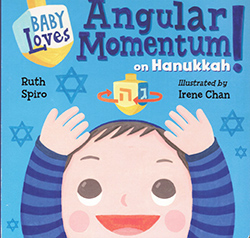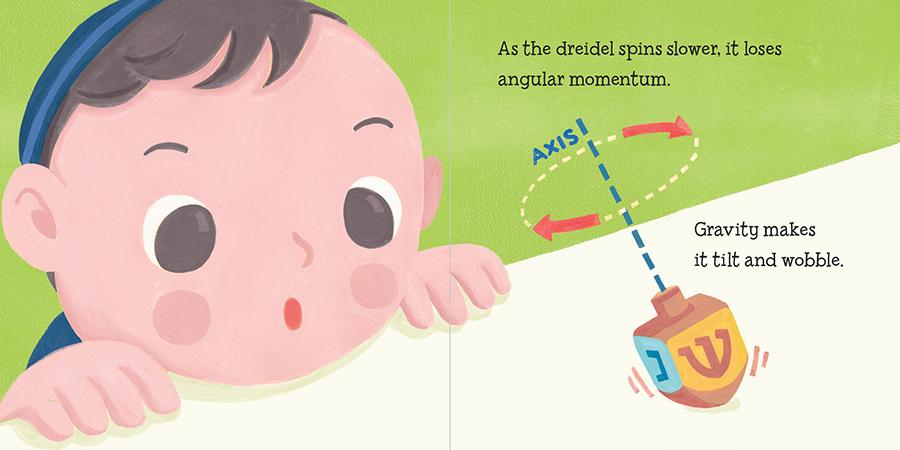 Educators long have worked with STEM curricula — emphasizing Science, Technology, Engineering, and Math. When artists declared such curricula were too limiting, the notion of STEAM was introduced. Science, Technology, Engineering, Art, and Math.
Educators long have worked with STEM curricula — emphasizing Science, Technology, Engineering, and Math. When artists declared such curricula were too limiting, the notion of STEAM was introduced. Science, Technology, Engineering, Art, and Math.
Now, here comes STREAM — Science, Technology, Religion, Engineering, Art, and Math –or so said my grandson Shor Masori, a UC Berkeley student majoring in psychology, after he viewed a new cardboard-page book for toddlers titled Angular Momentum on Hanukkah.
The book skims over the miracle of Chanukah (my preferred spelling of the holiday) to get to the popular game of dreidels enjoyed by youngsters and grown-ups alike during the eight-day celebration.
“What makes the dreidel spin? A twisting force called torque,” the toddler will learn. “The spinning dreidel has angular momentum. That means it spins and spins instead of falling over. The spinning dreidel hits tiny molecules in the air. That creates friction. The point of the dreidel rubs against the table. That creates friction, too. Friction slows the dreidel down. As the dreidel spins slower, it loses angular momentum. Gravity makes it tilt and wobble. Gravity pulls the dreidel down.”
I can’t imagine a preschooler actually grasping these concepts. “What is angular momentum versus ordinary momentum?” is a question that throws this grandpa. But according to Shor and two of his college friends, the book primes children to understand the concept a little later in life. They may not know what the adult reading the book to them is talking about, but when such terms as “torque,” “angular momentum,” “molecules,” “friction,” and “gravity” are taught to them more formally after they begin attending school, the terms will resonate within the youngster, who then will catch on.
I don’t know if this is true, coming as it does more than 70 years after I attended pre-school.
But I like the sound of it.
Republished from San Diego Jewish World


























